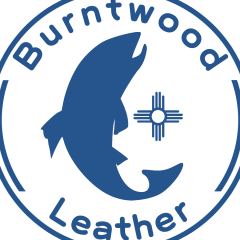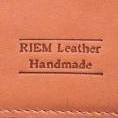
newyorkleather
Members-
Content Count
9 -
Joined
-
Last visited
-
Italian Shoes Antique Effect
newyorkleather replied to newyorkleather's topic in Leatherwork Conversation
Thank you for the insight. It would seem that an airbrush would work to provide a darker cloudy effect in specific areas like the toe and heel, but I'm not quite sure it would give the nuances of the naturally aged effect. I think the ideal solution would be a dye that gets applied as a cream so that it doesn't all soak into the leather immediately but can be worked in with light coats. Perhaps a mixture of dye and polish or wax would work? Here is another picture that shows the effect of a darker color that seems to be worked in gradually with a cloth instead of being dyed heavily with a sponge. -
This is a topic that I have been researching for quite a while, so I thought I would bring it up with some of the experts here on the forum. I am trying to achieve the beautiful luster that is present in handcrafted Italian men's shoes. The French shoemakers also do this effect on shoes and call it "patine e glacage" (most notably a brand called Berluti). A picture is worth a thousand words, so I have posted a few sample images. Though on the basic level, I know that antiquing and color variations can be achieved by using different coats of lighter and darker dye with a carnauba wax finish, experience shows me that you cannot quite get that lovely transition of color that way, as dyes tend to have a more blotchy demarkation instead of the "brush off" effect that is present with these Italian shoes. it would seem that the Italian shoemakers use a combination of creams, polishes, acetone (to lighten already dyed leather), special crust calfskins, and burnishing brushes. It still escapes me, however, how they are able to get those subtle shading effects in areas like perforation holes, in the stitching areas and around the tip and heel. From what I can tell -- and from extensive experimentation -- this simply cannot be achieved using conventional dyes or antiquing products. I have tried using dark shoe creams and polishes over a lighter dye and it simply doesn't darken the areas where they are applied. I wonder, therefore, what they are using to get those deep "chiaroscuro" effects on the leather. Does anyone have experience of suggestions to provide?
-
Texon, leatherboard, or other similar reinforcement
newyorkleather replied to newyorkleather's topic in Suppliers
Hi. I'm setting up a shop in Bklyn as well. I've been based in Italy so I don't have the machines yet, so no Artisan Toro. Feel free to send me a message and we can compare notes. Cheers. Simon Gruban (tel. 973-454-4375) is the Bontex person in NJ. He was very helpful with me and even sent over some samples. -
Texon, leatherboard, or other similar reinforcement
newyorkleather replied to newyorkleather's topic in Suppliers
Hi. Just wanted to let you know I found a supplier for Bontex in NJ. Thanks again for the tip. Are you in NYC as well? -
Hi. I thought I'd direct a question to the knowledgeable folks here. I'm accustomed to using a band knife splitter, but am considering one of these stationary blade hand splitters for my home workshop. Can anyone tell me if I can get fairly reliable splits at around 1.5 ounces if the leather is fairly firm? I know these manual splitters can be a little tricky, but I'm wondering if with a little trial and error I can get decent results. I'm usually splitting pieces that are approximately 4" x 12".
-
Texon, leatherboard, or other similar reinforcement
newyorkleather replied to newyorkleather's topic in Suppliers
Thanks for the tip Ed! Bontex is exactly what I would be looking for. Did you order it directly from them or is there a supplier out there? Yes, I am in NYC. -
newyorkleather started following Texon, leatherboard, or other similar reinforcement
-
Texon, leatherboard, or other similar reinforcement
newyorkleather replied to newyorkleather's topic in Suppliers
Hi. Thanks for the reference. Yeah, I tried to contact the Texon offices in the U.S. but they seem to only deal with huge wholesale orders. In Italy, all I had to do was walk down the street to one of the many leather supply stores and buy Texon or leatherboard by the meter in whatever thickness I wanted. Seems so much more difficult to find the materials I need here. What do folks use to reinforce leather here in the USA? Thanks -
Wondering if anyone with some knowledge in electricity and motors could give me some pointers on importing some used leathergoods machinery from Europe. I have the opportunity to purchase the following items a Camoga band knife splitter and an ATOM die clicker press. Both of these work on three phase 380 Volt current. Does anyone know what would be involved in converting these machines for use in the U.S.? Would I have to change the motors or would it be possible to run them off converters? Thanks.
-
Hi. When I used to do leatherwork in Italy, when we wanted to reinforce leather, we used either a resin-coated cellulose board called "Texon" (also often used for shoe insoles) or a leatherboard material called "salpa." Does anyone know where one can order these materials in the U.S.?


